We are given a 3x3 magic square consisting of an array of nine distinct positive integers such that the sum of the numbers in each row,
each column, and each of the two diagonals is the same. In the following magic square:
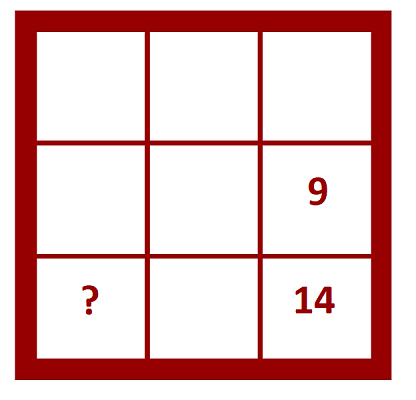
What are the possible values of the lower left corner?
And what is the maximum possible value of any number in the array?
Solution to the Problem:
y = 5,6,7,8,10,12, and 13, and the maximum value of any number in the array is 35.
Let x represent the number in the upper right corner of the magic square.
Let y represent the number in the lower left corner where the question mark was.
Then the array can be written as follows:
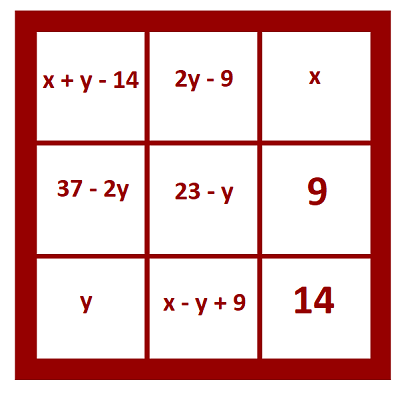
So (x + y - 14) + (2y - 9) + (x) = x + 23
Therefore x = 46 - 3y.
Now the array can be written solely in terms of y as follows:
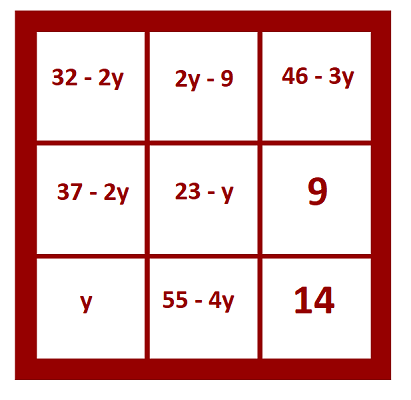
Now (2y - 9) > 0 and (55 - 4y) > 0 --> 4 < y < 14.
Since array values are distinct, y cannot equal 9 and 11.
So y = 5,6,7,8,10,12, and 13 only.
Also, since the maximum value in a 3 by 3 magic square with distinct numbers cannot be in the center nor the corners, we need only consider maximizing (2y - 9), (37 - 2y), and (55 - 4y).
Substituting y = 5 into (55 - 4y) yields a maximum value of 35 for any number in the array.
Here are the seven possible magic squares:
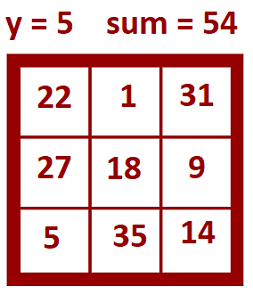
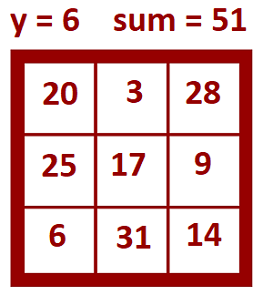
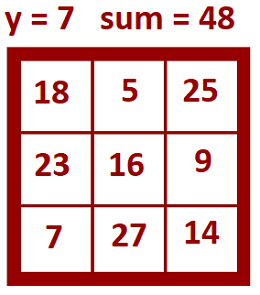
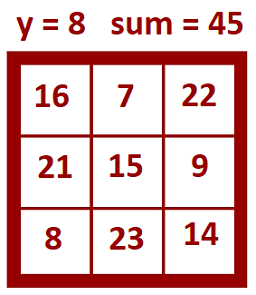
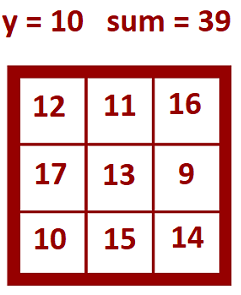
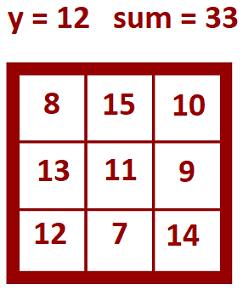
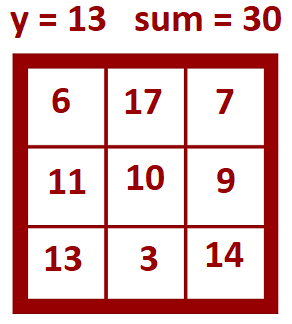
Correctly solved by:
| 1. Rob Miles | Northbrook, Illinois, USA |
| 2. Seth Cohen | Concord, New Hampshire, USA |
| 3. Ivy Joseph | Pune, Maharashtra, India |
| 4. Kelly Stubblefield | Mobile, Alabama, USA |
| 5. Colin (Yowie) Bowey | Beechworth, Victoria, Australia |